What secrets lie within the paintings of Master Farshchian?
-
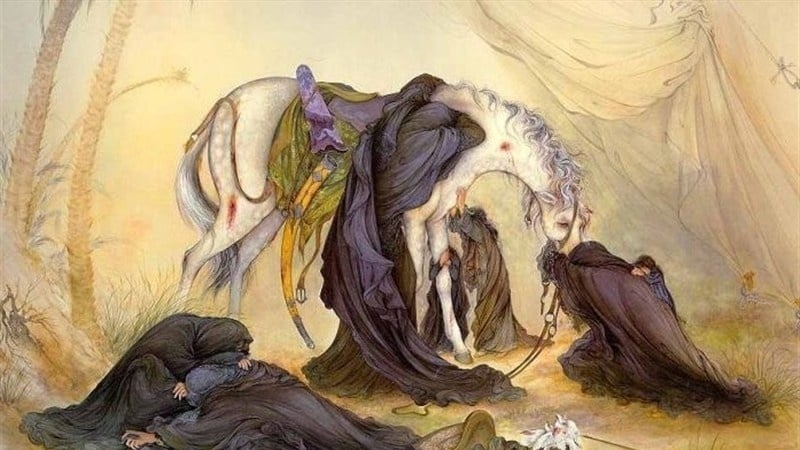
The Evening of Asura
Pars Today – Master Mahmoud Farshchian is one of Iran’s greatest contemporary artists and a symbol of Iranian painting and miniature art. His works are recognized not only in Iran but worldwide, having made a profound impact on contemporary art.
Farshchian was born in 1930 in Isfahan, the cultural heart of Iran, and showed an early interest in art and painting. According to Pars Today, with his innate talent and continuous training, Farshchian became one of the most prominent Iranian painters and miniaturists.
The beginning of an Iranian art legend
Farshchian's journey into the world of art began in childhood when his father, noticing his passion for painting, took him to the workshop of Master Haj Mirza Agha Emami, a skilled Isfahani miniaturist. Emami, who possessed great expertise in traditional painting, kindly and meticulously taught the young apprentice the fundamentals of art and nurtured his talent.
In his youth, he entered the Isfahan School of Fine Arts, where he studied under Master Isa Bahadori, a prominent student of Kamal-ol-Molk. Bahadori, the school’s director, imparted to him his knowledge of miniature painting, oil painting, carpet design, and illumination, further igniting his creativity.
Farshchian's works, particularly in the fields of miniature painting and illumination, are renowned for their precision and unique beauty. By using vibrant colors and specialized techniques, he has created images that embody the spirit and culture of Iran. His paintings are celebrated not only for their visual splendor but also for their conceptual and philosophical depth. Each of his works tells a story, transporting the viewer into the realm of Persian imagination and mythology.
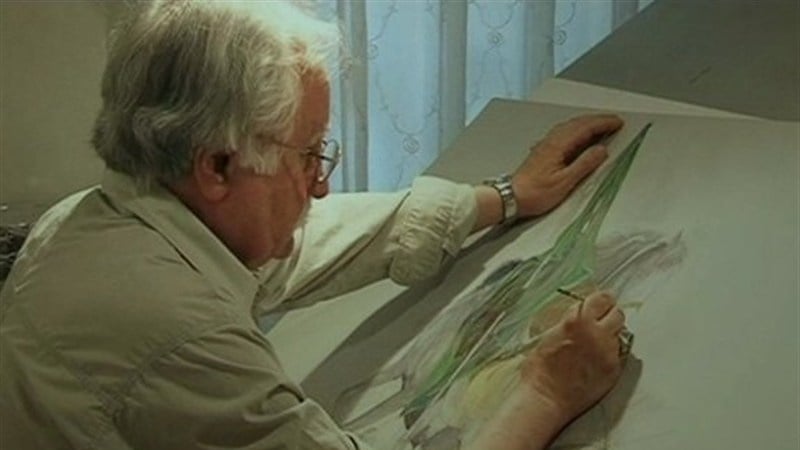
The works of Master Farshchian: From "The Evening of Ashura" to the Shrine of Imam Hussain (pbuh)
Master Farshchian has created hundreds of works, including The Evening of Ashura, The Guarantor of the Deer, Shams and Rumi, Adoration, The Night of Mourning, and The Fifth Day of Creation. He also illustrated masterpieces such as Shahnameh of Ferdowsi, The Rubaiyat of Khayyam, and The Divan of Hafez.
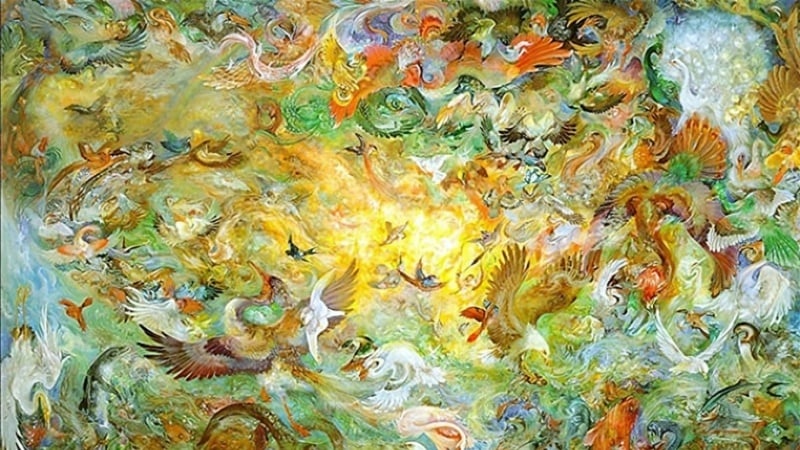
The painting The Evening of Ashura vividly depicts the tragedy of Ashura, evoking deep sorrow and grief in the viewer. Shams and Rumi captures the essence of Persian mysticism and divine love, while The Guarantor of the Deer narrates the story of Farshchian’s own healing through his devotion to Imam Reza (pbuh).

In a gesture of reverence, Master Farshchian voluntarily designed the sacred shrines of Imam Hussain (pbuh) in Karbala, Imam Reza (pbuh) in Mashhad, the Cellar of Occultation in Samarra, and the shrine of the Martyrs of Karbala. His works have been exhibited in over a hundred exhibitions across Iran, the United States, Europe, and Asia.
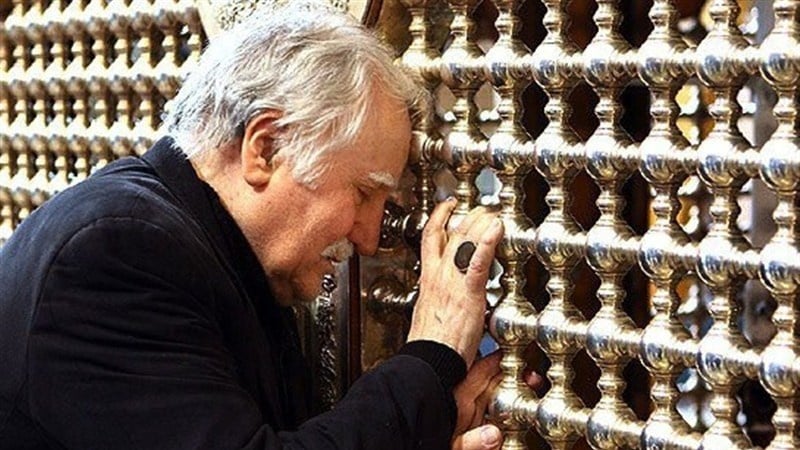
"The Guarantor of the Deer": An inspiring masterpiece and the story of the Master's healing
One of Farshchian's most profound works, The Guarantor of the Deer, was born from a deeply personal trial. After his right hand became paralyzed due to severe nerve damage, doctors told him he might never paint again. But through his devotion to Imam Reza (pbuh) and a vow for healing, Farshchian experienced a miracle—regaining his ability to paint.
He recounts seeing the Imam's face in a dream, where he was told: "Paint me!" This vision repeated for three consecutive nights until Farshchian could finally render the Imam's likeness on canvas. Created in 1980 using acrylic on cardboard, the painting now resides in the Astan Quds Razavi Museum and remains one of his most beloved works.
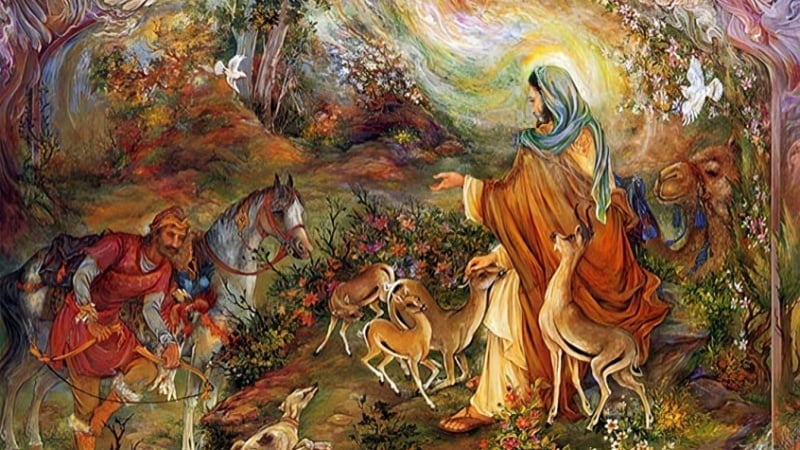
Art in the service of faith: Master Farshchian's endowment of works to Astan Quds Razavi
Master Farshchian emphasized in his remarks that for him, religious art is simply a duty and a divine blessing. He stressed that his deep reverence and trust in Imam Reza (pbuh), the eighth Imam of Shia Muslims, inspired him to dedicate all his works as endowments. Farshchian stated: "I have never accepted payment for my religious artworks—all of them are endowed to Astan Quds Razavi. For me, this is an everlasting treasure."
Through his art, Farshchian has secured not only a distinguished place in the world of fine arts but also a special corner in people's hearts. With each painting, he weaves a story, transporting us to a realm of imagination and beauty. His works will continue to inspire artists and art lovers across the globe for generations to come.
On August 9, 2028, Master Mahmoud Farshchian passed away at the age of 95. In the final years of his life, despite health problems, he continued to create art and left behind a rich legacy of religious and mystical works. His death was a great loss for Iranian art.
MG


